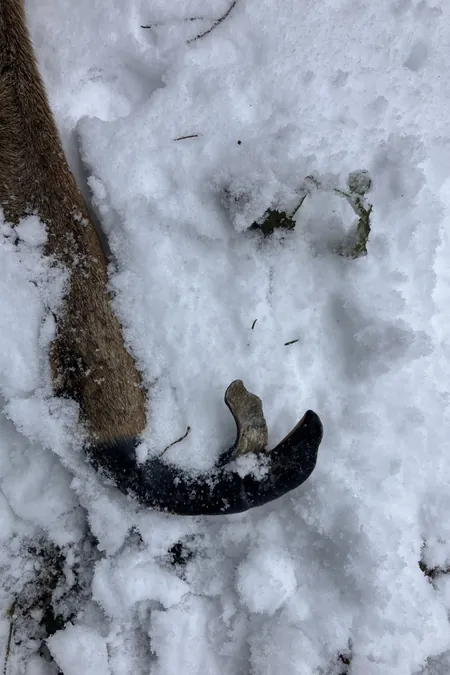
Urgent Warning: Why Feeding Deer Could Be Harming Wildlife
2025-03-25
Author: Liam
Urgent Warning: Why Feeding Deer Could Be Harming Wildlife
In a concerning report from the Sunshine Coast, a Conservation Officer has issued a critical warning to residents about the dangers of feeding deer, particularly highlighting the alarming rise of foundering disease, or laminitis, in the Halfmoon Bay area. Dean Miller from the BC Conservation Officer Service (BCCOS) revealed that over the past nine years, an alarming number of deer exhibiting signs of this debilitating condition have been observed, with a recent case in February resulting in the euthanasia of a deer that had become immobile due to the disease.
Understanding Foundering Disease
Foundering disease typically arises from severe nutritional imbalances caused by diets excessively rich in fermentable carbohydrates. This imbalance can lead to heightened inflammation and reduced blood circulation in the extremities, particularly in the hooves, which in turn causes excruciating pain, long-term lameness, and even complications that can impair the deer’s organ functions.
The Dangers of Feeding Deer
While it is not illegal to feed deer under provincial law, Miller emphasizes the significant dangers associated with this practice. Feeding ungulates can disrupt their natural dietary habits, leading to behavioral changes and an increased likelihood of collisions with vehicles. Wild deer are designed to forage for diverse natural foods that meet their specialized dietary needs, and feeding them unnatural foods can have severe repercussions on their health.
Consequences of Congregation
Moreover, congregating deer as a result of human feeding not only raises the risk of spreading infectious diseases but also elevates intraspecific stress, which can harm their social structures and overall well-being. “What may seem like an act of kindness can, in reality, result in irreversible harm to these animals,” Miller stated.
Experts' Recommendations
Experts encourage the public to understand the long-term implications of their actions and to foster wild behaviors in deer populations to promote their health and sustainability. By allowing deer to thrive in their natural environment and diet, we can help ensure their longevity and wellbeing in the ecosystem.
Conclusion
As the population of deer in areas like Halfmoon Bay continues to be affected by human interactions, it is vital for residents to adopt responsible practices for wildlife conservation. By refraining from feeding deer and respecting their natural habits, we can contribute to the preservation of these majestic animals and the health of their habitats. Stay informed and spread the word to make a positive impact on wildlife conservation efforts!









 Brasil (PT)
Brasil (PT)
 Canada (EN)
Canada (EN)
 Chile (ES)
Chile (ES)
 Česko (CS)
Česko (CS)
 대한민국 (KO)
대한민국 (KO)
 España (ES)
España (ES)
 France (FR)
France (FR)
 Hong Kong (EN)
Hong Kong (EN)
 Italia (IT)
Italia (IT)
 日本 (JA)
日本 (JA)
 Magyarország (HU)
Magyarország (HU)
 Norge (NO)
Norge (NO)
 Polska (PL)
Polska (PL)
 Schweiz (DE)
Schweiz (DE)
 Singapore (EN)
Singapore (EN)
 Sverige (SV)
Sverige (SV)
 Suomi (FI)
Suomi (FI)
 Türkiye (TR)
Türkiye (TR)
 الإمارات العربية المتحدة (AR)
الإمارات العربية المتحدة (AR)